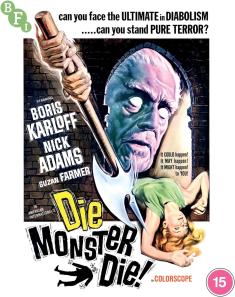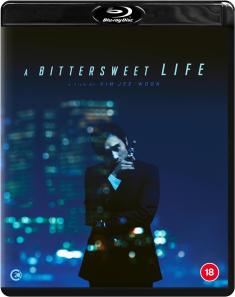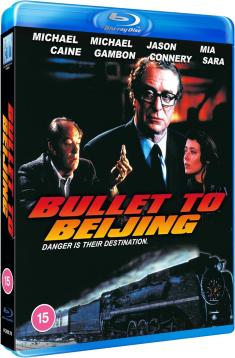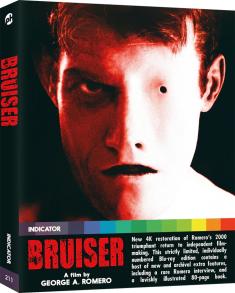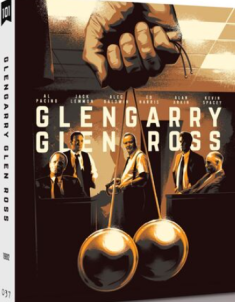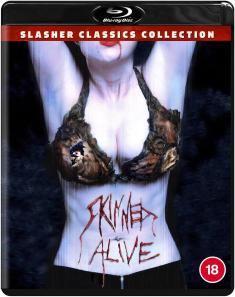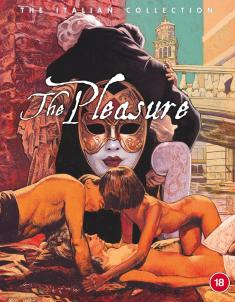Nikon D850 DSLR
Overview -
OVERALL:
Recommended
Tech Specs & Release Details
EDITOR'S NOTE: Hey, folks. Palmer here. I know you come to HDD for our movie & home theater gear coverage, but as an overall gadget enthusiast, I'm very curious to see how many of you are ALSO interested in digital camera reviews. Basically, I know you love media and high-quality picture/sound, but are you interested in making things in 4K and HD? To find out, I going to reprint a few reviews I originally wrote for our sister site, Steve's Digicams.com, so let us know in the comments below if you'd like to see more of these. Cheers & thanks for reading!
PICK UP THE NIKON D850 IF...
You're an enthusiast or pro photographer who wants access to great glass, needs the benefits of shooting full-frame 35mm without the expense of a Medium Format camera, and who primarily shoots stills -- landscapes, weddings, portraits, products, even action or sports.
SKIP THE NIKON D850 IF...
You're a video-first shooter or its out of your budget (maybe consider the D500 or OM-D EM-1 Mark II). Yes, the D850 shoots handsome video that would be great for vlogs and documentaries, but if you need to shoot moving subjects, Sony's 2017 full-frame offerings feature dramatically superior AF performance, while the Panasonic GH5, which has more pro-features and can do in-camera HDR video.)
In what Nikon calls "the new benchmark in DSLR image quality", the Nikon D850 is, in many ways, a more compact, more affordable version of the company's D5 flagship DSLR. We'll get into the specifics in just a moment, but this modern, rugged DSLR hangs with the D5 in all but a few key areas... while costing $3,000 less, which makes this camera a bargain for pros and advanced enthusiasts. Even crazier, Nikon seems to be chasing Medium Format users by stuffing a 45.7-megapixels onto this Full-Frame sensor (although I'm sure my Medium Format friends will call shenanigans, still, these files and images are as sumptuous as they are sizeable, to say the least, so it's definitely close to achieving this goal).
In fact, given the D850's price advantage, pixel abundance, and speed, the D850 may just have our vote for the best DSLR ever made. If you shoot portraits, landscapes, wildlife, or weddings and other events, you're gonna want to check this out.
KEY FEATURES
-45.7MP back-side illuminated (BSI) full-frame image sensor
-no optical low-pass filter
-Expeed 5 image processor
-3.2" Tilting Touchscreen Display
-ISO 64 - 25,600
-153 focus points, 99 cross-type sensors
-Silent Shutter Mode (in Live View & Time-lapse modes)
-up to 6fps at full resolution OR
-up to 30fps at 8.6MP in DX area (limited to 3-seconds)
-7fps continuous shooting at full resolution with full AF
-9fps continuous shooting with optional grip & extra D5 battery
-4K/30p Ultra HD Video Recording
-full frame recording (no crop!)
-Up to 120fps at 1080p HD
-8K+ time-lapse intervalometer
-4K in-camera Time-lapse Movies
-Focus Shift mode
-Wi-Fi
-Bluetooth
-no optical low-pass filter
-Expeed 5 image processor
-3.2" Tilting Touchscreen Display
-ISO 64 - 25,600
-153 focus points, 99 cross-type sensors
-Silent Shutter Mode (in Live View & Time-lapse modes)
-up to 6fps at full resolution OR
-up to 30fps at 8.6MP in DX area (limited to 3-seconds)
-7fps continuous shooting at full resolution with full AF
-9fps continuous shooting with optional grip & extra D5 battery
-4K/30p Ultra HD Video Recording
-full frame recording (no crop!)
-Up to 120fps at 1080p HD
-8K+ time-lapse intervalometer
-4K in-camera Time-lapse Movies
-Focus Shift mode
-Wi-Fi
-Bluetooth
GEAR USED
During our Nikon D850 review, we had access to lots of great Nikkor glass, including:
Of these lenses, the 24-120mm F4 is a must-have versatile lens that will cover most scenarios, but isn't the fastest glass out there and its telescoping design *could* allow for dust and other gritty particles to build up in and around the barrel. Still, with some care, it's an excellent lens. The 70-200mm F2.8 is glorious in every way possible and, with the second version of Vibration Reduction, is awesome at handheld video and low-light shooting. It's PERFECT for shooting portraits or landscapes, but you'd probably want a 300mm+ lens for shooting wildlife. The Fisheye lens does its job well, but for me, was a little too wide below 12mm -- I'm not sure what the purpose of shooting circular images that don't cover an entire frame. And the 16-35mm F4 is another excellent landscape-friendly lens.
The takeaway is this: if you buy a Nikon camera, save up for Nikkor lenses.
IMAGE SENSOR & PROCESSOR
The Nikon D850 boasts an all new 45.7MP FX Format BSI CMOS image sensor (a first for Nikon) without an optical low pass filter (OLPF). Nikon says the BSI image sensor is more efficient, offering more dynamic range and less noise; ditching the filter improves overall sharpness. The EXPEED 5 image processor, from the D5 and D500, is here too, offering speed and excellent ISO performance with a native ISO 64 - 25,600 range that expands to 32 - 102,400. Users can opt to shoot in three different RAW files sizes -- Large (45.7-MP), Medium (25.6-MP) and Small (11.4-MP) -- and in five formats -- FX, 1.2x, DX, 5:4, or 1:1 square -- with viewfinder shading to help frame your shots.
I openly admit to being a bit of a Nikon fanboy when it comes to their sensors, which is crazy because I've never actually owned a Nikon system. Instead, over the last two years I've had the great fortune to test their D5, D500, D7500, D750, D810, and now D850 DSLRs while working here at Steve's and Nikon sensors are, and this is hard to convey in writing, a bit magical. Are they The Best Ever? Who can say, everyone's making great cameras and sensors. But Nikon sensors offer incredible amounts of dynamic range, shadow detail/recovery, rich colors, and, when shooting with fast glass, the closest results I've ever seen to actually shooting with film (in many ways, a LOT better).
And the D850 is my favorite so far.
For more sample images, please make sure to check out our
I'm simply floored by the quality and capabilities on display here.
Seriously, heap on the superlatives because the dual sensor/processor hearts of this camera are a home run, offering precision, versatility, and beauty at every turn. Photographers must always straddle the line between business and art, and this camera is perfect for working pros who need reliable performance with the flexibility to make large prints. Despite all these extra megapixels stuffed onto a (relatively) smaller sensor (compared to Medium Format), there's little-to-no noise unless you push ISO up towards 10,000.
If there's one drawback to having all the pixels you need (and then some), the camera will produce its sharpest, pixel peeping perfection when you're using a tripod because it lacks the in-body stabilization found on Sony, Olympus, and Panasonic mirrorless cameras. In other words, any subtle movement is magnified. Nikon's VR lenses correct for this, but it would be nice to see Nikon build a camera with in-body image stabilization to allow for more hand-held accuracy.
AUTO FOCUS
The new Nikon D850 also boasts Nikon's flagship AF system, utilizing the D5's 153-point, Multi-Cam 20K AF system, which features 99 cross-type sensors, 15 of which are sensitive to F8. The center point is actually capable of focusing down to -4EV, which is one stop beyond what the what the 180K pixels RGB metering system is capable of handling.
To access & adjust the AF system, tap-and-hold the AF button on the front-left of the body (next to the HDMI port), using the rear control dial to toggle between Single and Continuous AF, and the front dial to toggle between options like 3D (for tracking) and engaging up to those 153 AF points.
Much like the D500 we tested last year, if you're shooting through the optical viewfinder, the D850's AF system is a unsheathed weapon ready for shooting sports and moving wildlife action shots. Simply put, if your images aren't coming out as sharp as you want them with this camera, it's probably your fault. (Sorry, but it's true.) I definitely messed up during my time with the D850, experimenting with different subjects and techniques and all in full manual, but this AF system is a dream.
SPEED
In addition to blazing AF capabilities, the D850 can shoot up to 7fps in full res lossless RAW with the standard battery OR up to 9fps with the optional MB-D18 battery grip and the EN-EL18a/b batteries (from the D5). The buffer for continuous shooting is 51 frames of 14-bit lossless RAW capture, 170 frames of 12-bit lossless, and only limited by your memory card when shooting in .jpeg.
While the D850 can't keep up with the Sony A9 (or the Micro Four Thirds maven, the Olympus OM-D E-M1 Mark II), it's fast enough to sports and other action scenarios. I had no troubles capturing motocross bikers flying through the air and kayakers diving down rapids.
If you engage Live Mode -- viewing and framing via the D850's 3.2" tilting touchscreen, you can shoot SILENTLY up to 6fps at full resolution OR up to 30fps in 8.6MP DX image area mode. This is perfect for wedding or wildlife photographers who don't want to disturb your subjects, but let's be very clear -- Nikon's Live View is NOT a phase detection focusing and it's accurate, but it's way too slow for highspeed action. So, if you're shooting at 30fps, you probably want to lock your focus first, which, of course, reduces this feature's impact and capability.
METERING
The camera's 180K pixel RGB metering sensor is as accurate as they come, taking into account not just scene brightness, but also how bright each color is in your shot. For those who ascribe to the Sunny 16 method, you're covered. Many Nikon loyalists will tell you to underexpose Nikon shots because it's easier to pull details out of this image sensor's shadows than highlights, and this is true -- there are crazy details in the shadows -- but generally speaking, the camera knows what it's doing.
Nikon has also included a Focus Stacking feature, which allows you to take up to 300 still images in 0-30-second intervals, in total silence, at adjustable focus step intervals to help you capture stunning macro and landscape images (but you need to process these in third-party software).
FLASH
Unlike the D810, the D850 forgoes a built-in flash (this was done to help with the improved weather sealing), but you do get support for Radio Flash Control (like the D5 and D500 DSLRs) when using the optional SB-5000 Speedlight and WR-A10 or WR-R10 accessories.
For more sample images, please make sure to check out our
BUILD & ERGONOMICS
The Nikon D850 may look like any standard DSLR, but there are a number of subtle improvements over the D810. The magnesium alloy body is more rugged than ever before and features more O-ring weather sealing. Simply put, this is an extremely well-built camera that had no troubles with dust, heat, and cold weather (no rain on this trip, sadly).
The D850 feels great in the hand. Solid and weighted, but not too heavy. For a full-frame DSLR, it's not that bad shooting hand-held for most of the day unless you're sporting lots of ultra-telephoto glass. That said, I'm not a huge fan of the new grip design, which has been revised to add depth and length. It's a little too angular and rough just under the shutter button and irritated the skin on my middle finger.
To help with low-light shooting, you can opt to have the camera's buttons light up. Speaking of which, the overall button layout is fantastic, I like that Nikon uses dual control dials (front and back), the rear joystick is useful for setting your focus points, and everything is easy to find. My one note here is that I wish the Video Record button was more thumb accessible than pointer finger accessible.
The D850 features dual memory card slots -- one UHS-II capable SD slot, and one XQD slot. It's funny, some of my colleagues have complained that the D850 needs dual XQD slots because the card format is faster/better than SD cards, while others have clamored for dual SD slots because no one else uses XQD. I personally see this setup as a happy medium, and use the XQD slot for RAW shooting & movie recording, while saving the SD slot for JPEGs and in-camera processed RAW files. Others might recommend redundancy. Up to you.
MENUS
My second least favorite aspect of day-to-day living with the D850 is the camera's archaic menu system. To be fair, so many DSLRs are setup this way, and it's understandable that you'd end up with sub-menu after sub-menu after sub-menu because these cameras have so many features and custom settings. Still, if you're switching brands or jump between various camera systems, expect a bit of a learning curve between you learn where all the Easter Eggs are tucked away. It's not bad, mind you, just dense in a way that I hope someone will revolutionize (although Canon and Olympus are making great strides). Then again, if you're a pro or enthusiast with a specialty, you're going to cross this learning curve quickly and know exactly where everything you need is located. Plus, you can use the My Menu feature to make a list of your favorite settings.
DISPLAYS & VIEWFINDERS
In addition to Nikon's "widest & brightest" 0.75x optical viewfinder ever, the D850 also features a 3.2" tilting touchscreen rear LCD display (2.3M dots) with a lot of new touch-functionality that allows you to not only do things like activate the shutter and adjust focus, but also scrub videos during playback. You can also use Focus Peaking in either Live View (for stills) or Full HD video recording to help to achieve sharpness exactly where you need and want.
The optical viewfinder is fantastic. Big, bright, and clear, you can adjust focus to fit your eyes. Under the frame, you can see various settings like metering mode, shutter speed, aperture, current exposure, ISO level, and remain shots. In frame, you'll see various AF points pop up into view. Coupled with the joystick on the back of the body, you never really have to bring your eye up and away from the viewfinder while shooting.
The tilting touchscreen is also quite nice. Sharp, colorful, and clear, the screen itself tilts to full horizontal whether you are shooting low or high above your head. It's in here where you can set up the camera's silent shutter operation to save wear n' tear and also get some candid shots without announcing to the world, "hey I'm a loud photographer!!!"
In terms of exposure accuracy, the screen seems about a stop or two underexposed compared with you see on a calibrated monitor. Meaning, if you use this monitor to judge rather than the camera's metering system and/or histogram, you could end up with brighter-than-necessary footage, so make sure you're using your histogram. The real letdown, when using the screen, is Nikon's lackluster Live View mode and contrast AF system. To be fair, the AutoFocus is accurate, it'll lock on a point with the touch of a finger, or lock-on faces with ease... but then you get the delay as your lens hunts back and forth, squeaking away as it does it. It's slow and noisy and, compared to what Sony and Canon and Olympus are doing today, not very good at all. It's my least favorite D850 feature, to be honest, because everything else about this camera exceeds expectations.
If you shoot mostly stills, you won't really care. But if you're a video-first person, this camera can be frustrating. Especially if you're shooting alone.
4K VIDEO RECORDING
Not just aimed at still photographers, the D850 wants to be a multi-media production tool for videographers and filmmakers. It can shoot up to 4K UHD @ 30p or 24p and uses the full sensor width (there's no crop factor to consider with your lenses). If you use the HDMI output rather than internal memory cards for recording, you can capture uncompressed 4:2:2 8-bit 4K UHD footage, which is both great to have, but it would have been better to hit 10-bit to match the HDR capabilities of modern 4K displays (like the Panasonic GH-5 and the newly announced Sony A7R III).
Though recording internally results in a more consumer-friendly bitrate, I quite liked the Nikon D850's 4K video quality. Colors are accurate, and low-light performance is better than most cameras. There's no S-Log, of course, but you can use the camera's Picture Modes to shoot your video flat and neutral, leaving it ready to be color graded after the fact. The 5D Mark IV has a better AutoFocus system and higher bitrate files, but the motion jpeg codec is less than ideal.
The real bummer with this camera's video performance is that Live View AF system, which is accurate, but slow and, depending on the lens, way too loud. Honestly, you can't touch-focus while recording or let the camera track subjects because it'll hunt and miss and you'll hear the whole mess. But with locked focus, for interviews or B-roll, the actual final product will outperform just about every 2017 camera save for the Sony A9, Sony A7R III, and Panasonic GH5.
If Nikon could every implement an honest-to-God Live View AF system, like Canon's Dual Pixel or Sony's phase detection system, they could make one of the best all-in-one cameras out there. Yet, for a stills-focused DSLR, the 4K videos files are manageable and attractive. A flip-out or 180-degree tilting viewfinder would also help for interviews and vlogging.
In Full HD 1080p, the D850 can record up to 60p for native files as well as 120fps for creating in-camera slow motion (the 120fps shots are saved as 24p files for playback). There's also a built-in stereo microphone, inputs for headphones and an external mic, as well as a new audio attenuator to regulate sound levels.
Overall, the in-camera slow motion videos are a LOT of fun, but at a full 120fps, the action can stutter a bit and feel less fluid at times. The new GoPro HERO 6 has smaller, noiser image sensor, but offers much smoother slow motion.
The in-camera mic is about as good as DSLR mics ever are (aka NOT good), and the audio attenuator liked to record a bit hot with an external mic, but being able to set the levels is nice. Then again, it's a feature buried in the Video sub-menu.
TIME-LAPSE
In addition to video capabilities, you can set the D850 to record 8K time-lapses (requires assembling in third-party software) OR 4K time-lapses (in-camera). In fact, there's a new interval timer menu option that will drop all your still image files into a separate folder and file numbering system so you can manage your sequences easier. And there's even a SILENT time-lapse mode that only actuates the shutter for the first frame, then uses the E-shutter for the remainder of your time-lapse. This is not only perfect for wildlife scenarios, but will also save wear and tear on the shutter itself (time-lapses can be up to 9,999 frames) and battery life.
In a press release, this sounds marvelous and innovated, but it's a touch misleading so let's back up a sec and break down what's really happening. The D850, like most DSLRs, includes a built-in intervalometer, or Interval Timer Shooting mode, in the Photo Shooting Menu where you can select how many shots you want to capture and how long between each shot. What's great is that you can use the silent mode, send all your RAW or .jpgs to their own folder, and start right from in this submenu. And, if you're shooting in Large, you're shooting at a resolution that exceeds the 8K (7680×4320), which is great because you can zoom and crop to make 8K or 4K movies, but you still have to process these stills outside the camera and it's not really an 8K mode despite what they're advertising. In other words, other than the separate folders, there's nothing magical about 8K time-lapses... But if you're a time-lapse photographer, you're going to love the quiet shooting and saving wear and tear and all those megapixels. To be clear, I'm not a time-lapse expert, but the first demos I've seen are pretty stunning.
4K Time-Lapse is completely separate and accessed via the Movie Shooting Menu, where it's called Time-lapse Movie. Here, you select your interval, shooting time, and frame rate up to 4K/60, 1080/60, and 720/60, and start/stop via the OK button. In Time-lapse, the camera builds your movie for you and doesn't leave you with separate still images. It works great for those who don't want to process hundreds (thousands?) of full resolution image, but leaves you with less control. Using this mode is a little clunky because it's buried so deep in the D850's submenus.
BATTERY LIFE
According to Nikon, the standard EN-EL15a battery is capable of shooting up to 1,840 full resolution still images or approximately 70 minutes of 4K video in a single charge. While in the field, mixing still shooting, videos with multiple frame rates & resolutions, reviewing footage, wireless transfer, and all the testing you've read about in this review, I found D850 battery life to be a mixed bag. If you're only shooting stills and not reviewing your material or uploading it off the camera, you could probably eek out a day's worth of work. With our heavy usage, we got about five hours per battery. Definitely needed two batteries for longer days.
You can also opt to attach the MB-D18 Battery Grip ($396.95 MSRP) with an EN-EL18a (or EL18b) battery ($220 MSRP) and an MH-26A battery charger, which boosts speeds to 9fps and 5,140 shots per charge. Or, you can pick up extra EN-EL15a batteries for about $73 each.
NEGATIVE DIGITIZER OPTION
This feature requires a $150 (ES-2) Film Digitizing Adapter and a compatible Micro-NIKKOR Lens, but if you have old 35mm film negatives and positives (in color or black & white), you can use the D850 as a high-resolution scanner.
WIRELESS
The D850 includes built-in Wi-Fi and Bluetooth as well as Nikon Snapbridge connectivity, which will send a 2MP version of those massive 45MP files to your phone for instant social sharing and/or allow you to control the D850 remotely from any iOS or Android device. You can also opt to add the Nikon WT-7A Wireless Transmitter, which connects to the D850 via USB and enables deeper security while allowing you to upload files to an FTP site and/or control the camera via any web browser in the world.
This is a bit of a good news / bad news situation. Snapbridge is easier to install and pair than ever before, and it's quite helpful to have quick 2MB files that you can toss up on Instagram. But, I learned the hard way that if you don't put the D850 into Air Plane Mode, the camera's wireless settings will suck down your battery (even if the camera's powered off for the night). Also, about halfway through my review, I disconnected Snapbridge and was unable to get it to pair again, which meant I couldn't remotely control the camera, and there were issues with manually selecting images I wanted to download to the app.
Overall, the wireless experience is improving and should get there whenever Snapbridge is updated next, and always use Airplane Mode if you're out in the field.
FINAL THOUGHTS
The Nikon D850 is one of the best DSLRs ever made. Period. Full stop.
Yes, we had a few notes -- the Live View AutoFocus is slow, you'll see some rolling shutter in video, it's a little hard to find settings in the endless menus, and Snapbridge has a few bugs (and will eat your battery!), so it's not the perfect camera for those who split their time between stills and video.
Nitpicks aside, the D850 is so extraordinary I can't really see the need for anyone to buy a D5 until that camera is replaced or maybe not even then. The images captured are gorgeous, accurate, and so, so flexible. Especially when it comes to pulling up shadow details. The metering system is spot-on, while the AutoFocus system is excellent. And, while you wouldn't want to shoot overly complicated action, the video 4K recording capabilities are top notch. In other words, if you shoot stills but need a quality camera to capture interviews or B-roll for vlogs or documentaries, the D850 does a better job (with far more manageable file sizes) than the 5D Mark IV. You could easily argue that the Sony A9/A7RIII and the Panasonic GH5 are better video cameras, but the D850 has more available telephoto glass than the Sony and takes far superior stills when compared to the GH5.
The only question remaining is this: what does the D850 DSLR mean in 2017?
Nikon, if you're reading this, I adore your D850 but I have one piece of advice: get yourselves some legit Live View Auto Focus, take all of the wonderful things you mastered here in the D850, and put it into a mirrorless camera. Keep it weather-sealed. Keep it ergonomic. Keep your gorgeous sensors. But a more compact system with in-body image stabilization and your stunning glass could easily become The Perfect Camera for pros who split time between stills and videos.
You can do this; you're already so, so close.
Thanks again for the chance to review this BEAST!







